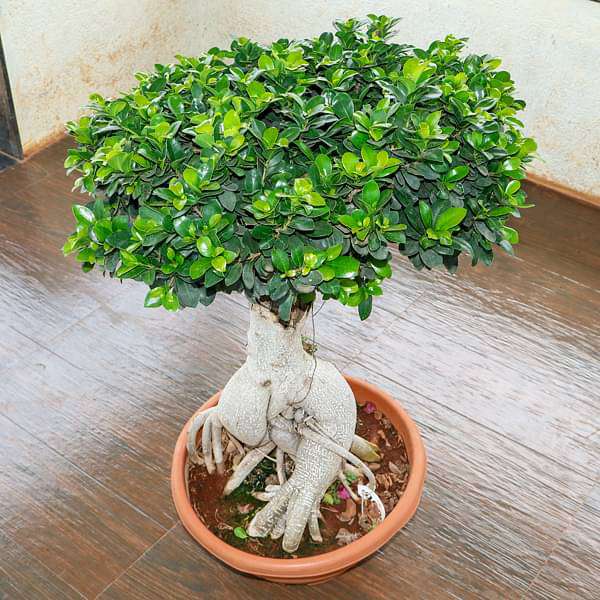
Ficus Panda Bonsai - Plant
(MRP Inclusive of all taxes)
- Shipping ₹79 for entire order
- Dispatch in 7 days
- Country of origin: India

(MRP Inclusive of all taxes)
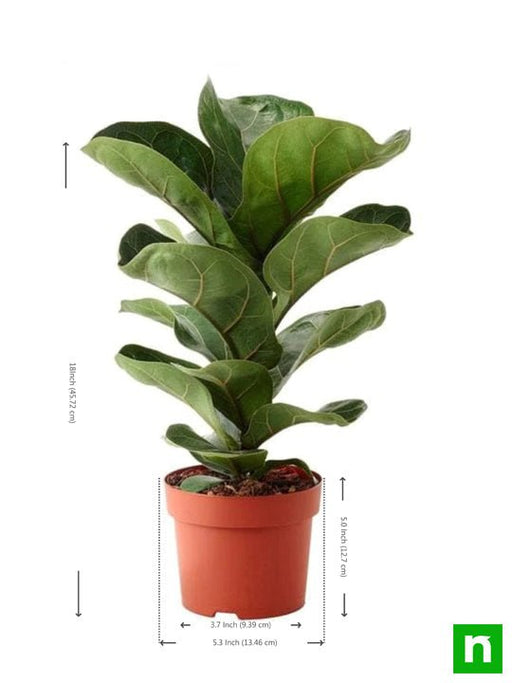
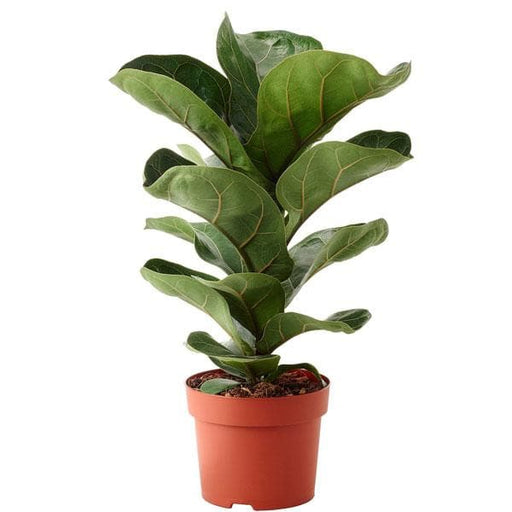 Save 19%
Save 19%
Ficus Lyrata Bambino, Dwarf Fiddle Leaf Fig - Plant The Ficus Lyrata Bambino, commonly known as the Dwarf Fiddle Leaf Fig, is a stunning h...
View full details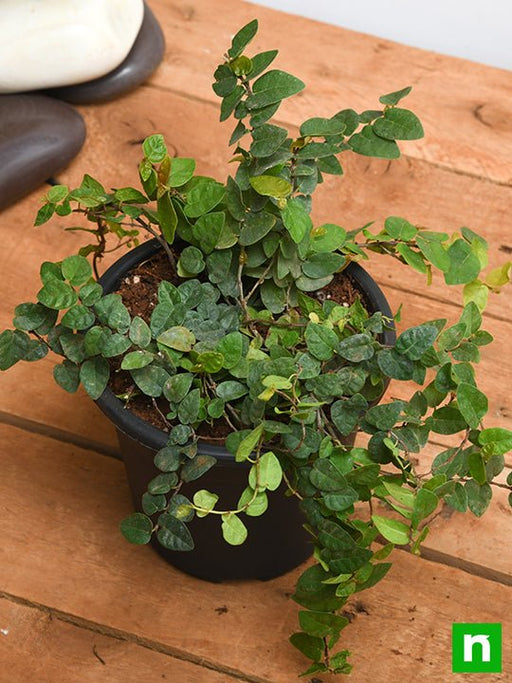
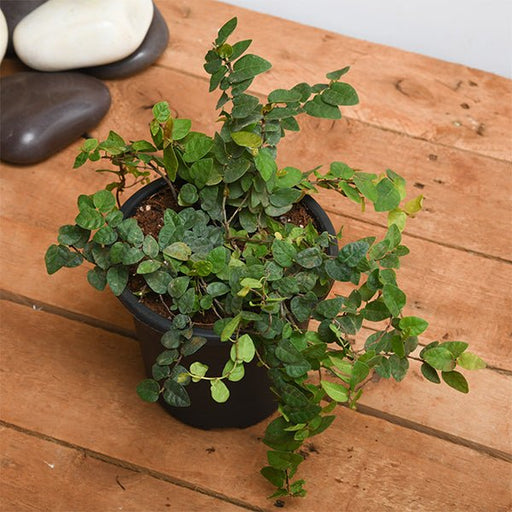 Save 26%
Save 26%
Creeping Fig Plant, Ficus pumila The Creeping Fig, scientifically known as Ficus pumila, is a versatile and resilient climbing plant nativ...
View full details
 Save up to 29%
Save up to 29%
Rubber Tree, Rubber Plant, Ficus elastica (Small) - Plant The Rubber Tree, scientifically known as Ficus elastica, is a stunning indoor plant that...
View full details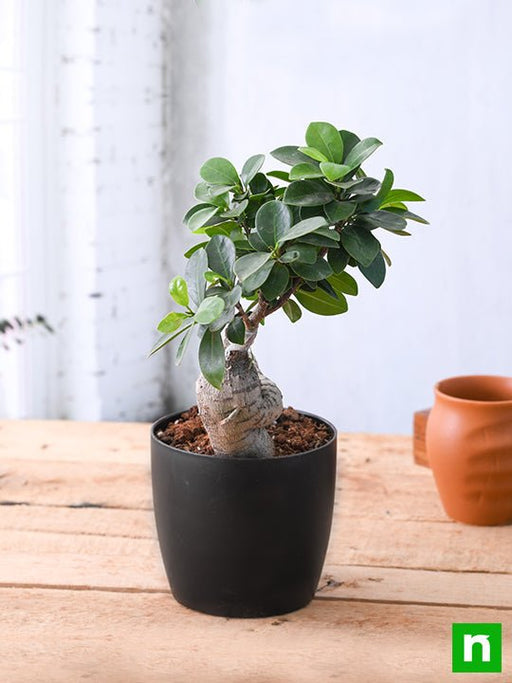
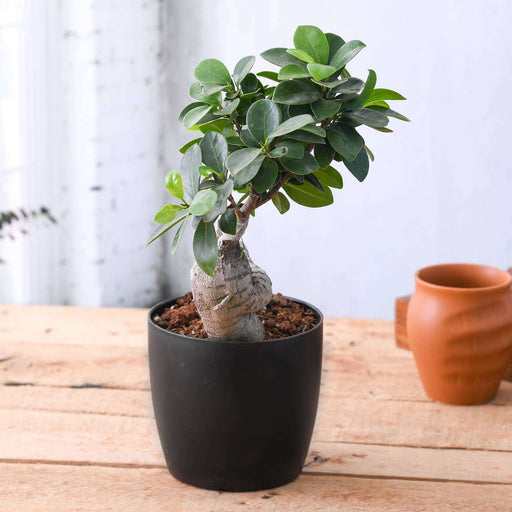 Save 16%
Save 16%
Ficus Bonsai - Plant The Ficus Bonsai is a captivating miniature tree that brings a touch of nature's elegance into your home or office. K...
View full details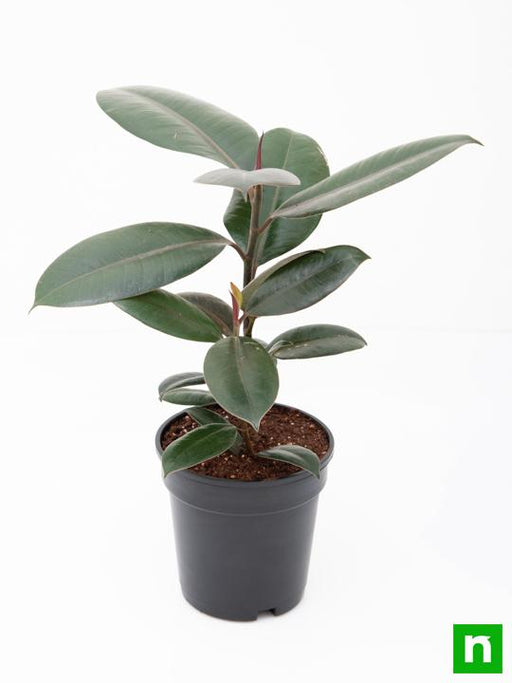
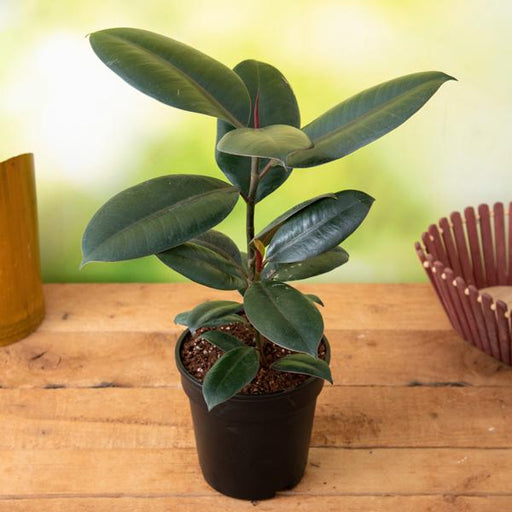 Save 17%
Save 17%
Rubber Tree, Rubber Plant, Ficus elastica The Rubber Tree, scientifically known as Ficus elastica, is a stunning indoor plant renowned for...
View full details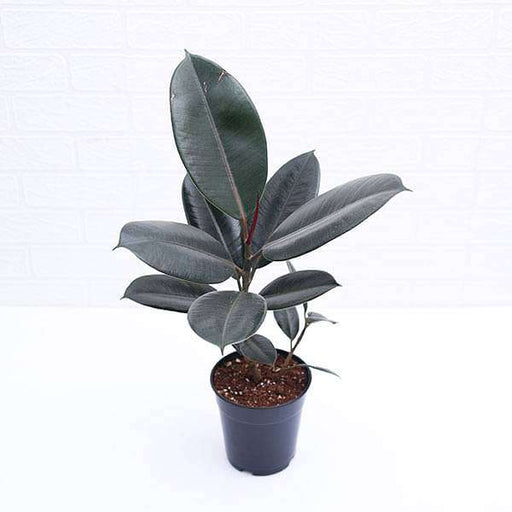
 Save 23%
Save 23%
Rubber Tree, Rubber Plant, Ficus elastica (Black Prince, Burgundy) The Rubber Tree, scientifically known as Ficus elastica, is a stunning ...
View full details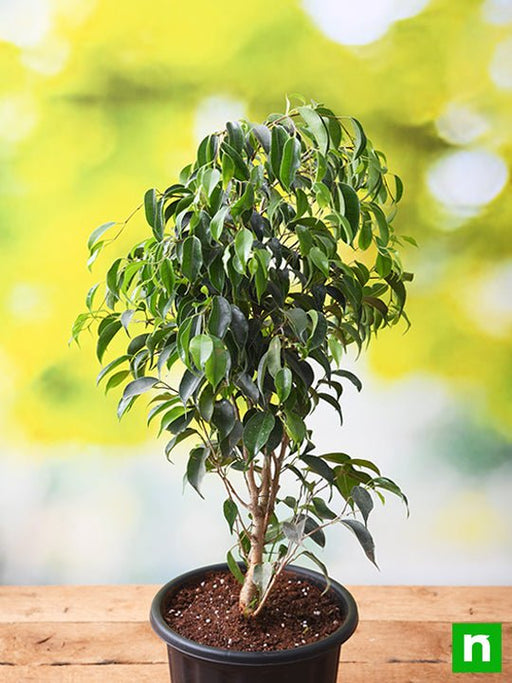
 Save 18%
Save 18%
Ficus Benjamina - Weeping Fig Plant The Ficus Benjamina, commonly known as the Weeping Fig, is a stunning indoor plant that boasts glossy,...
View full details Save 15%
Save 15%
Pack of Vermicompost and Neem Cake for House Plants Transform your indoor garden with our premium Pack of Vermicompost and Neem Cake, spec...
View full details
Pack of Plant Growth and Flower Boosters Unlock the full potential of your garden with our Pack of Plant Growth and Flower Boosters! This ...
View full details Save 38%
Save 38%
Combo of Jeevamrut and Neem Raksha for Easy Growth and Protection of Houseplants Transform your indoor garden with our exclusive combo of ...
View full details Save 22%
Save 22%
Plant Nutrients Kit (Pack of 16) for a Healthy Garden Transform your garden into a lush paradise with our Plant Nutrients Kit, featuring 1...
View full details Save 16%
Save 16%
Combo of Top Plant Fertilizers Elevate your gardening game with our exclusive Combo of Top Plant Fertilizers, featuring two bags of premiu...
View full details Save 24%
Save 24%
Pack of 4 Additives to Make Soil Healthy and Nutrient Rich Transform your garden into a thriving ecosystem with our Pack of 4 Additives de...
View full details Save 30%
Save 30%
Transform your gardening experience with our premium Combo of Perlite and Vermiculite. This unique blend is designed to enhance soil aeration and ...
View full details Save 27%
Save 27%
Combo of 2 Vermicompost and Cocopeat - Enrich Your Soil Naturally! Transform your garden into a thriving ecosystem with our Combo of 2 Ver...
View full details
 Save 35%
Save 35%
Best 6 Plants for Perfect Indoor Garden Transform your living space into a lush oasis with our curated collection of the Best 6 Plants for a...
View full details
 Save up to 50%
Save up to 50%
Mini Succulent Garden Pack Transform your space with our Mini Succulent Garden Pack, featuring a delightful collection of 4 any variety beautiful s...
View full details
 Save 30%
Save 30%
5 Best Fragrant Plants Transform your garden or indoor space into a fragrant paradise with our curated selection of the 5 Best Fragrant Plants. Th...
View full details
 Save 24%
Save 24%
Set of 2 Bonsai Looking Grafted Adeniums Transform your indoor or outdoor space with our exquisite Set of 2 Bonsai Looking Grafted Adenium...
View full details Save 45%
Save 45%
Top 4 Die Hard Succulents Pack Transform your indoor or outdoor space with our Top 4 Die Hard Succulents Pack, featuring a curated selecti...
View full details
 Save 30%
Save 30%
5 Best Indoor Plants Pack Transform your living space into a lush oasis with our '5 Best Indoor Plants Pack.' This carefully curated collection fe...
View full details
 Save 25%
Save 25%
Set of 4 Evergreen Air Purifier Plant Pack Transform your indoor space into a lush, green oasis with our Set of 4 Evergreen Air Purifier Pla...
View full details| SrNo | Item Name |
|---|---|
| 1 | Ficus Panda Bonsai - Plant |
The Ficus Panda Bonsai is a captivating miniature tree that brings a touch of nature into your home. Known for its lush, dark green leaves and unique, gnarled trunk, this bonsai is a perfect choice for both beginners and seasoned plant enthusiasts. Its compact size makes it an ideal indoor plant, enhancing any space with its beauty and tranquility.
What sets the Ficus Panda apart is its resilience and adaptability. This species can thrive in various indoor conditions, making it a low-maintenance option for busy lifestyles. Its ability to purify the air adds to its appeal, creating a healthier living environment.
Special features of the Ficus Panda include its unique leaf shape and the ability to tolerate low light conditions. This bonsai can be easily shaped and styled, allowing for creative expression in your gardening journey.
Caring for your Ficus Panda Bonsai is like nurturing a tiny green diva. It demands just the right amount of sunlight, water, and love. Too much water? It’ll sulk. Too little? It’ll throw a tantrum. Keep it in bright, indirect light, and let the top inch of soil dry out between waterings. Remember, this little tree is not just a plant; it’s a lifestyle choice. Treat it well, and it’ll reward you with lush leaves and a zen-like vibe that’ll make your living room feel like a tranquil Japanese garden.
Pruning your Ficus Panda Bonsai is akin to giving it a stylish haircut. You want to shape it into a masterpiece without giving it a bad hair day. Snip away those unruly branches to encourage bushiness and maintain its adorable stature. Just remember, less is more! A little trim here and there will keep your bonsai looking sharp and ready for its close-up on Instagram. So grab those shears and channel your inner bonsai stylist!
The right soil for your Ficus Panda Bonsai is like the perfect pair of shoes—supportive yet breathable. A well-draining mix is essential to keep those roots happy and healthy. Look for a blend that includes akadama, pumice, and organic matter. This combo will ensure your bonsai doesn’t drown in its own glory. After all, nobody wants a soggy bottom! With the right soil, your Ficus Panda will thrive and show off its stunning foliage like a true superstar.
Fertilizing your Ficus Panda Bonsai is like giving it a gourmet meal. It needs the right nutrients to grow strong and vibrant. Opt for a balanced liquid fertilizer during the growing season, and watch your little tree flourish. Just don’t overdo it; too much food can lead to a rebellious growth spurt that’s hard to control. Think of it as a fine dining experience—quality over quantity is the name of the game!
Repotting your Ficus Panda Bonsai is like moving it to a bigger apartment. It’s a necessary step for growth, but it can be a bit stressful for both you and your plant. Aim to repot every couple of years, using fresh soil to give those roots room to stretch. Just be gentle; nobody likes a rough move. With a little care, your bonsai will settle into its new digs and continue to thrive, making it the envy of all the other plants in the house.
Propagating your Ficus Panda Bonsai is like starting a family tree—literally! You can take cuttings and encourage them to root, creating mini versions of your beloved plant. It’s a fun and rewarding process that allows you to share the joy of bonsai with friends and family. Just remember to keep those cuttings in a warm, humid environment until they establish roots. Soon enough, you’ll have a whole clan of Ficus Pandas to show off!
The Ficus Panda Bonsai can be styled in various ways, each reflecting your unique personality. Whether you prefer a classic upright style or a whimsical cascade, the possibilities are endless. Experiment with different shapes and techniques to find the one that speaks to you. Just remember, this isn’t just a plant; it’s a canvas for your creativity. So grab your tools and let your imagination run wild—your Ficus Panda is ready for its artistic debut!
Owning a Ficus Panda Bonsai is like having a personal therapist in plant form. It purifies the air, reduces stress, and adds a touch of tranquility to your space. Plus, it’s a conversation starter! Guests will be intrigued by your miniature tree and may even ask for tips on how to care for their own. With all these benefits, it’s no wonder the Ficus Panda is a favorite among plant enthusiasts. Who knew a little tree could bring so much joy?
Pests are the uninvited guests at your Ficus Panda’s party, and nobody likes a party crasher. Keep an eye out for common culprits like spider mites and aphids. A little neem oil or insecticidal soap can send them packing. Regularly inspecting your bonsai will help you catch any infestations early, ensuring your plant remains the belle of the ball. After all, a healthy Ficus Panda is a happy Ficus Panda, and we want it to thrive without any pesky interruptions!
The debate of indoor versus outdoor for your Ficus Panda Bonsai is like choosing between a cozy blanket and a sunny beach. Both have their perks! Indoors, it thrives in controlled conditions, while outdoors, it can soak up natural sunlight. If you choose to take it outside, just be mindful of temperature changes. Your Ficus Panda will appreciate the fresh air, but it’s a delicate soul that prefers a stable environment. Choose wisely, and your bonsai will flourish wherever it calls home.
If you’re a beginner, the Ficus Panda Bonsai is like the friendly neighbor who helps you move in. It’s forgiving and easy to care for, making it the perfect starter plant. With its resilient nature, it can bounce back from minor mistakes, allowing you to learn the ropes without too much stress. So, if you’re ready to embark on your bonsai journey, the Ficus Panda is here to guide you, one leaf at a time!
A Ficus Panda Bonsai is a miniature version of the Ficus tree, known for its lush, glossy leaves and charming appearance. It's like having a tiny jungle in your living room, minus the mosquitoes! Perfect for beginners, this plant adds a touch of zen to any space without requiring a PhD in botany.
Caring for your Ficus Panda Bonsai is a breeze! Just give it bright, indirect sunlight, water when the top inch of soil is dry, and keep it away from drafts. Think of it as a low-maintenance roommate that only asks for a little love and attention—no late-night snack raids required!
Absolutely! The Ficus Panda Bonsai thrives indoors, making it the perfect companion for your home office or cozy nook. Just ensure it gets enough light and watch it flourish. It’s like having a little piece of nature indoors, minus the bugs and dirt—who wouldn’t want that
Water your Ficus Panda Bonsai when the top inch of soil feels dry—about once a week should do the trick. Remember, it’s not a thirsty cactus! Overwatering can lead to root rot, which is like giving your plant a bad hair day. Keep it hydrated, but not drowning!
A well-draining potting mix is the best choice for your Ficus Panda Bonsai. Think of it as the plant’s version of a comfy mattress—supportive yet breathable. A mix of peat, perlite, and pine bark will keep your bonsai happy and healthy, ensuring it doesn’t feel like it’s stuck in quicksand.
Pruning your Ficus Panda Bonsai is like giving it a stylish haircut! Use sharp, clean scissors to trim back any overgrown branches and shape it to your liking. Aim for a balanced look, and don’t be afraid to get creative. Just remember, no mullets allowed in the bonsai world!
Good news for pet parents! The Ficus Panda Bonsai is non-toxic to cats and dogs, making it a safe addition to your home. Just keep it out of reach of curious paws, as they might mistake it for a chew toy. Your plant can thrive while your furry friends stay safe—win-win!
Propagating your Ficus Panda Bonsai is easier than you think! Simply take a cutting with a few leaves, place it in water or moist soil, and watch it grow roots. It’s like giving your plant a chance to make new friends—just don’t forget to introduce them properly!
Keep an eye out for pesky pests like spider mites and aphids. They’re the uninvited guests at your plant party! If you spot them, a gentle spray of water or insecticidal soap will send them packing. Your Ficus Panda Bonsai deserves a pest-free life, so play the bouncer!
Yes, fertilizing your Ficus Panda Bonsai is a great idea! Use a balanced liquid fertilizer every month during the growing season. Think of it as a gourmet meal for your plant—just don’t overdo it, or it might get a bit too plump and sassy for its own good!
With proper care, your Ficus Panda Bonsai can live for decades—talk about a long-term commitment! It’s like having a plant that’s in it for the long haul, ready to witness all your life’s ups and downs. Treat it well, and it’ll be your leafy companion for years to come!
Ficus Panda Bonsai loves a cozy environment, thriving in temperatures between 60°F and 75°F. It’s like your plant’s version of a perfect vacation—comfortable and relaxing! Avoid extreme cold or heat, as it can lead to a cranky bonsai. Keep it snug, and it’ll reward you with vibrant growth!